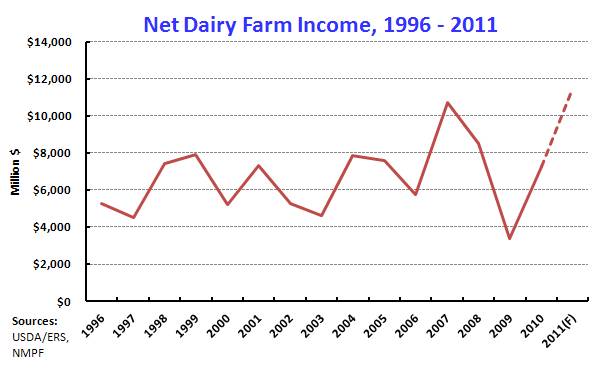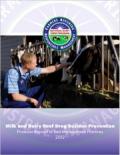In August 2011, the U.S. Department of Agriculture’s, Agricultural Marketing Service (USDA-AMS) released a draft of the “European Health Certification Program” to dairy industry trade associations (NMPF, the U.S. Dairy Export Council, the International Dairy Foods Association, and the American Dairy Products Institute) for review and comment. After gathering member feedback, NMPF submitted comments and questions last month to AMS, expressing general support for the program, and requesting additional clarification on specific points.
On November 21, 2011, USDA-AMS met with industry stakeholders, including NMPF, to discuss the logistical details of the project and to review the stakeholders’ remaining questions. As a result of that meeting, USDA-AMS finalized the requirements of the “European Health Certification Program”.
The effective date for beginning the transition to the new program requirements is January 1, 2012. After March 31, 2012, all shipments of dairy products requiring an EU health certificate must comply with the updated certification program and must be accompanied by an updated Certificate of Conformance.
The major differences between U.S. and EU milk requirements are: 1) the EU somatic cell count (SCC) and bacterial standard plate count (SPC) requirements apply at the farm level, and 2) the EU maximum SCC in raw cow’s milk is 400,000 cells/mL. Additional highlights of the program include:
- Milk suppliers, dairy processors, and applicants for EU Health Certificates are responsible for maintaining records to trace their product back one step in the supply chain (toward the raw milk production) for all dairy products/ingredients intended for export to the EU.
- Processors of dairy products/ingredients that require an EU Health Certificate will be responsible for maintaining Certificates of Conformance (COCs) demonstrating the dairy products/ingredients meet EU SCC and SPC requirements.
- Testing of the farm-level milk supply will be necessary to document compliance with the requirements for export of dairy products to the EU (both Grade A and Grade B milk for SCC, and Grade B milk for SPC). Grade A plants that supply ingredients or raw milk are generally exempt from requirements to keep additional records on SPC to confirm compliance with EU regulations.
- Milk suppliers will be responsible for providing COCs to processors, as well as maintaining records of individual farms, to confirm that raw milk meeting SCC and SPC requirements of the EU is received at facilities manufacturing dairy products for shipment to the EU.
- With respect to timing and implementation, all farms will be given three months to establish initial rolling three-month means – that is, SCC data collected in January, February, and March will be used to determine the rolling three-month mean for April. Non-Grade A farms will be given two months (January and February) to establish initial rolling two-month means for SPC. This data will serve as the initial basis for updated COCs under the new program requirements. According to the new program instructions, if a rolling mean exceeds EU requirements, the milk supplier must then notify AMS.
- The program instructions include a level of flexibility for farms that exceed EU SCC or SPC requirements, but work toward compliance. (For detail on these provisions, see Section F “Milk Supplier’s Responsibility” (pages 6-7), sections b and c.)
Information on the certification program may be found online. Please contact Beth Briczinski if you have questions or trouble accessing the link.








